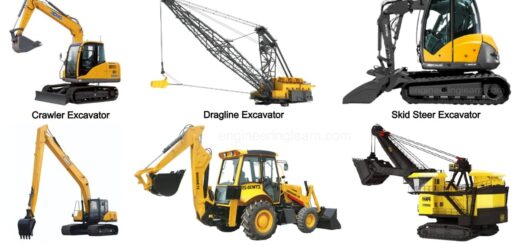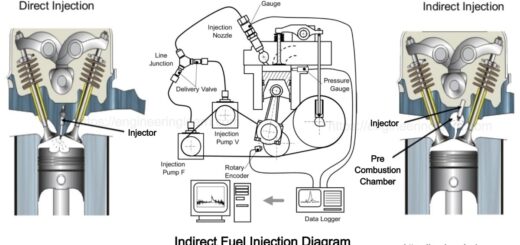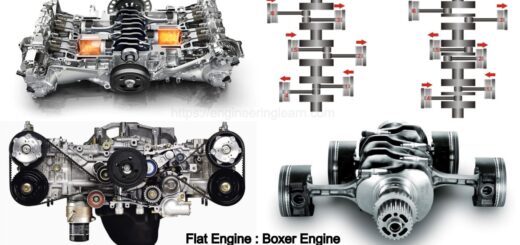Parts of Differential and Their Functions [Complete Details]
![Parts of Differential and Their Functions [Complete Details]](https://engineeringlearn.com/wp-content/uploads/2023/04/Parts-of-Differential-1-1024x539.jpg)
Introduction
Parts of Differential and Their Functions [Complete Details]: – Each part of a vehicle fills a need to keep it moving while you are on the road. The differential is an important component that works to apply torque (a rotational force) to the drive wheels. Whether the car is a front-wheel drive, rear-wheel drive or, all-wheel drive, the differential is required.
What is a Differential?
The differential is a vital part of a vehicle, as a component transfer, the engine power is transmitted to the wheels. Engine power is transferred by a rear propeller shaft to the wheel at first different in an alternate way by differential path then, at that point, alluded to rear axle shafts after that to the rear wheels. If we talk about any type of vehicle, the term “DIFFERENTIAL” refers or alludes to a device that allows the wheels which are on an axle to turn at different speeds and velocities while as yet receiving power from the engine.
This is important on the grounds that when a car is turning, inside and outside wheels should travel various distances. Without a differential, the wheels would be compelled to turn at a similar speed, which would cause sliding and tire wear.
Differential plays a very important role in assisting wheels with moving at an alternate speed without which you can face lot of difficulties and accidents. The differential allows the wheels to rotate at various speed and velocities by using a set of cog wheels that transmit power from the engine to the wheels. The gears are designed in such a way that the torque is split between the two wheels, permitting one wheel to turn faster than the other wheel. This permits the car to turn smoothly and flawlessly while maintaining traction on the road.
A differential that is faulty, will make the turning difficult and troublesome. As a matter of fact, your vehicle’s rear wheels can get locked while you are driving. Subsequently, driving your car might become dangerous, particularly when you are in traffic. For aiding to steer your vehicle and keeping the power adjusted between your tires differential plays a very important role.
Parts of Differential
The differential is comprised of many parts. The essential parts of a differential are the ring and pinion gears. The ring gear is connected to the carrier assembly, and set of smaller gears are inside the carrier. These smaller gears are frequently referred to or alluded to as spider gears which are comprised of one more set of pinion gears and the side gears. This arrangement of pinion gears supplies the differential action. Following the power flow inside the differential, the pinion gear drives the ring gear, which rotates or turns the carrier.
Below there is a brief description of different parts of the differential:-
1. Drive Pinion or Bevel Pinion
The drive pinion is otherwise called the bevel pinion. It is assembled with a differential housing which is referred as differential case. The driver shaft is connected or associated with the drive pinion by a universal joint and it attracts in with a ring gear. Subsequently, when the driver rotates or turns the shaft the drive pinion rotates, and accordingly, the ring gear rotates.
2. Differential Side Gear or Sun Gears
The differential side gears or cog wheels, also called the sun gears, they are the gears that are attached or connected to the axle shafts and mesh with the differential pinions to disseminate power to the wheels. If we talk about two bevel gears they are fixed together to join both the driving and driven shafts at angle of 90 degrees.
3. Ring Gear or Crown Wheel
The ring gear, otherwise called the crown wheel, is a large gear that meshes or lattices with the drive pinion to transmit power from the drive shaft to the differential.
4. Differential Pinions or Planet Gears
Differential pinions, otherwise called planet gears, are small gears that mesh with the differential side gears and permit the wheels on an axle to rotate or turn at various speeds.
5. Two Planet Pinion
Two Planet Pinions or At times Four Planet Pinions are placed inverse to one another and are meshed with the sun gears to transmit the power to the rear or back wheels by means of half shafts.
6. Differential Case
The differential case, otherwise called the carrier, it is attached with two-wheel axles and differential side gears. It comprises bearings that turn or rotate two axle shafts.
7. Axle Shafts or Half Shafts
The axle shafts, generally called the half shafts, are the shafts that connect or interface the differential to the wheels power from the differential to the wheels.
8. Pinion Shaft or Cross Pin or Spider
The pinion shaft, generally called the cross pin or spider, is a pin that holds the differential pinions in place and allows them to rotate freely. It also allows the differential gears to rotate in converse or inverse directions when the vehicle turns.
Why is Differential Needed?
The proper or legitimate working of a differential is fundamental while turning a vehicle. For correct usage of power distribution on the left and right wheels differential plays a very important role. While a car turns on a bend, the differential ensures that the wheel on the inward side of a turning curves gets less torque than the external one. It upgrades the vehicle’s control during cornering.
It very well may be utilized for rapid transmission lines with great quality because of noise elimination and less radiation. To understand the significance of this vehicular system, expect that there is no differential in a vehicle. In this situation, wheels on one or the other side of that car would get a similar RPM without a fail. For making the car move in a straight line both wheels of the car would travel in an equivalent distance. Hence, it is difficult or troublesome or almost impossible to approach move toward a corner.
The large number of issues which differential evades is by controlling vehicles’ rotational power. Vehicles may have front as well as rear differentials relying upon how the wheels of your vehicle are powered. For Instance, a real-wheel-drive car will just have a rear differential, while an all-wheel-drive vehicle will have both.
Conclusion
As far as we discussed about differential and its parts, the differential is utilized to drive a pair of wheels while providing them to rotate or turn at different speeds. This essentially gives proportional RPM between the left and right wheels. At the point when power is transmitted to a pair of wheels, the force is divided into equal parts between them, however for the vehicle to turn, inside and outside wheels must spin at different speeds as they are traveling various distances around a corner. In the event that a vehicle just at any point traveled in a straight line, there wouldn’t be a need for a differential. But since a vehicle must have the option to turn, a differential is required. In certain makes of cars, there has been a dynamic change in the size of the diff. The pinion gear and its roller bearing have decreased, and the differential oil capacity has additionally become less in each generation of 3 Series cars.
Image Source: – wikipedia, baautocare













